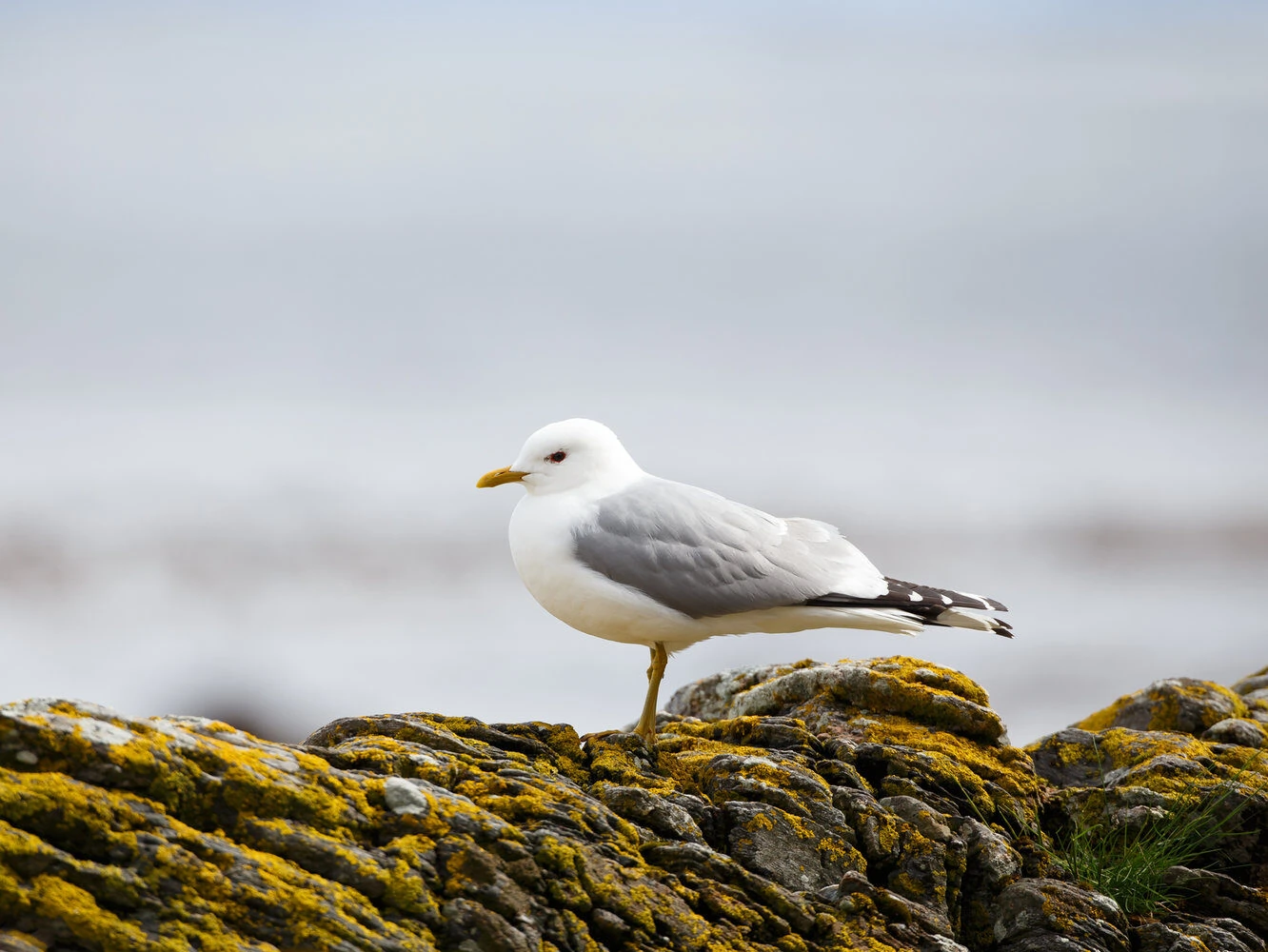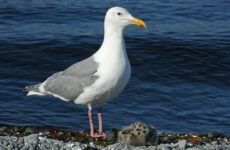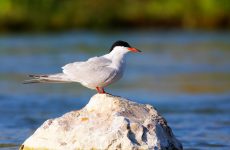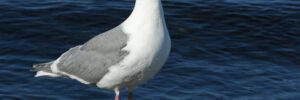
Compared to other similar white-headed and black-wing-tipped gulls, Short-billed Gulls are much smaller with their dainty bodies and dove-like heads.
Breeding adults have distinct red eyerings and short yellow bills and yellow legs. Nonbreeding adults have smudgy tan markings on their heads and necks and their earrings are gray.
Juveniles take three years to acquire their mature breeding coloring. They are pale brown with white feather wingtips that make them look scaled. They also have dark barring on their undertail coverts and dark brown tail feathers. They have two-toned bills.
- Larus brachyrhynchus
- Length: 16.1 – 18.1 in (41 – 46 cm)
- Weight: 12.7 – 21.2 oz (360 – 600g)
- Wingspan: 42.1 – 44.9 in (107 – 114 cm)
Range
Short-billed Gulls remain all year along the Pacific coast of Alaska and Canada, but those that breed inland in Alaska and northwestern Canada migrate to the Pacific Coast for winter.
Habitat And Diet
You can find Short-billed Gulls in marshy areas, and freshwater habitats like ponds, lakes, rivers, and streams. They prefer staying close to shore. Nesting sites are usually in the taiga, tundra, meadows, coastal cliffs, and islands in rivers and lakes.
Short-billed Gulls feed on small fish, crabs, and mussels when they’re near water. On shore, they pick marine worms, algae, and carrion. During the breeding season, they prey on the eggs of other birds and eat insects like beetles and ants.
Short-billed Gull Calls:
Nests
Nests of Short-billed Gulls are in hard-to-reach places like small islands, boulder fields, trees, and hummocks. They also nest on rooftops in suburban settings. Depending on the nest site, nests may be a shallow scrape on the ground, a shallow cup of twigs in trees, or floating nests in marshes.
Females lay one to five eggs which take about 3 to 4 weeks to incubate.
Fun Facts:
Short-billed Gulls were previously known as “Mew Gulls” and are the only white-headed gulls that regularly use trees for nesting.









